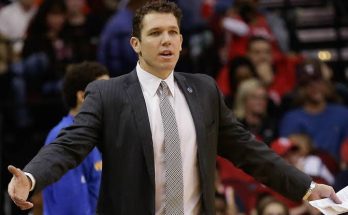The New York Jets have been one of the most talked-about teams in recent years, largely because of their quarterback struggles. While the defense has been elite and the offense has shown flashes of promise, the team’s inability to find consistent quarterback play has held them back from becoming a true contender in the AFC. With Aaron Rodgers’ arrival not going as planned, the Jets are now facing a critical decision on how to approach the quarterback position moving forward. Sources indicate that the Jets are looking for a “reset year” at quarterback, which could involve a complete overhaul of the position and a focus on long-term stability instead of short-term fixes. Let’s break down what a “reset year” at quarterback might mean for the Jets, why it’s necessary, and what potential options they have to start fresh.
The Case for a Reset Year at Quarterback
A “reset year” implies that the Jets are moving away from the pursuit of an immediate Super Bowl contender and instead shifting their focus to rebuilding the quarterback position in a more sustainable way. This decision comes on the heels of an unsuccessful stint with Aaron Rodgers, who was brought in to elevate the team and bring them back to playoff contention. Unfortunately, injuries and inconsistent play meant that Rodgers’ time in New York was short-lived, and the team was left with little choice but to reassess their strategy going forward.
Here’s why a reset year is necessary:
1. Uncertainty at Quarterback
For years, the Jets have been searching for a long-term answer at quarterback. From the days of Mark Sanchez to the more recent struggles with Sam Darnold and Zach Wilson, the franchise has struggled to find a stable signal-caller. Rodgers, a four-time MVP, was expected to solve the issue, but his arrival didn’t lead to the desired results. Now, with Rodgers likely leaving, the Jets are once again left in a position where they need to find the right quarterback to build around.
2. Drafting a Future Star
A reset year provides the Jets with an opportunity to address the quarterback position through the draft, something they haven’t done in years. The 2025 NFL Draft class is expected to have some promising quarterback prospects, and the Jets could use their first-round pick to secure their future signal-caller. While they may not be able to get a top-tier quarterback like Caleb Williams or Drake Maye unless they make a trade, there are still options available further down the draft board that could be developed into the future face of the franchise.
3. Salary Cap Flexibility
Part of the reset would also mean that the Jets might look to free up cap space to build around their next quarterback. With Rodgers off the books, the Jets could choose to invest in other areas of the roster to help develop a young QB, such as strengthening the offensive line or adding more weapons at wide receiver. If the Jets were to commit to a reset, they could bring in a veteran quarterback on a short-term deal and still have enough flexibility to build a team that can compete in the future.
4. Turning the Page from Rodgers’ Experiment
Aaron Rodgers’ arrival in New York was met with a lot of excitement. His experience and track record were seen as the perfect fit for a team on the verge of playoff contention. However, injuries and inconsistent play dashed those hopes, and the Jets now find themselves in a situation where they need to pivot. A reset year at quarterback allows them to finally turn the page and move forward with a new direction, rather than trying to make another high-profile veteran quarterback work.
What Does a Reset Year Look Like?
So, what exactly would a reset year entail for the Jets at the quarterback position? Here are some of the key components that could define the Jets’ approach:
1. Bringing in a Stopgap Veteran
In the immediate term, the Jets could look to bring in a veteran quarterback who is capable of holding down the fort while they prepare for the future. This veteran would not be seen as the long-term solution, but someone who could provide stability and help the team remain competitive in the short term. Players like Kirk Cousins or Jameis Winston could fit the bill. They are capable quarterbacks who can step in and run the offense, but they are also not the type of player the Jets would plan to rely on for more than a season or two.
By bringing in a stopgap veteran, the Jets could buy themselves time to evaluate their options for the future while still remaining competitive. The idea would be for the veteran to serve as a bridge until a long-term solution is ready to step in.
2. Developing a Young Quarterback
The most critical part of a reset year would be focusing on developing a young quarterback. Whether it’s through the draft or acquiring a promising young quarterback in a trade, the Jets would need to start grooming their future signal-caller. If they decide to draft a quarterback, the coaching staff would have to focus on player development and patience, understanding that it may take a few seasons for the new QB to adjust and reach his potential.
The Jets would likely look for a quarterback with good physical tools and the ability to grow under the tutelage of their coaching staff. This would also mean that the Jets are likely to prioritize building up the offensive line and surrounding the young QB with talent so he can develop without being overwhelmed by poor protection or a lack of playmakers.
3. Stability Over Flash
Part of the reset will also be ensuring that the quarterback position is handled with consistency and stability. The Jets are not looking to sign a high-profile QB in hopes of immediately winning a Super Bowl; rather, they need someone who can step in, manage the offense, and create a foundation for the future. This may involve a more methodical approach to the quarterback position, which means no more splashing big money on older veterans who only offer short-term solutions.
4. Emphasizing Team Development
A reset year also means focusing on overall team development. The Jets have a talented roster, with one of the league’s best defenses, a rising star in wide receiver Garrett Wilson, and solid pieces on offense. They’ll need to continue to develop these areas and make sure that they’re ready to support a young quarterback in the future. This may involve adding depth to key positions or upgrading the offensive line to ensure their new quarterback has the best chance to succeed.
Who Could the Jets Target in the 2025 Draft?
While the Jets may not have a top-five pick in the upcoming draft, they will still have an opportunity to grab a quarterback who could fit their long-term plans. The 2025 NFL Draft is expected to feature some solid quarterback prospects, and the Jets will need to do their homework to identify the best player available.


